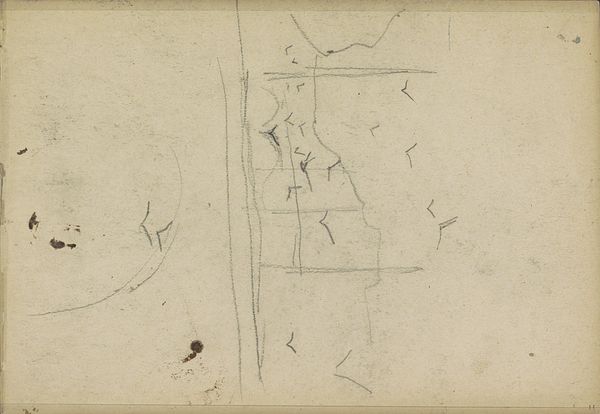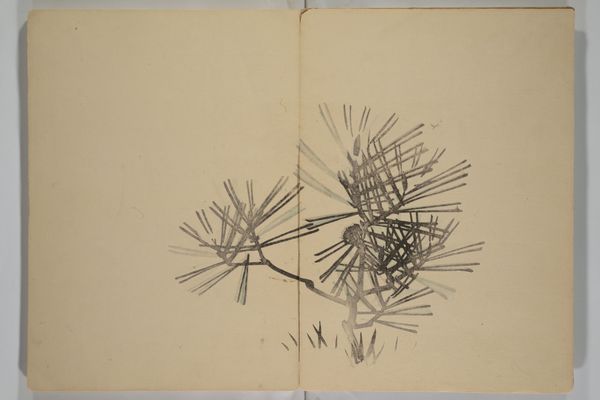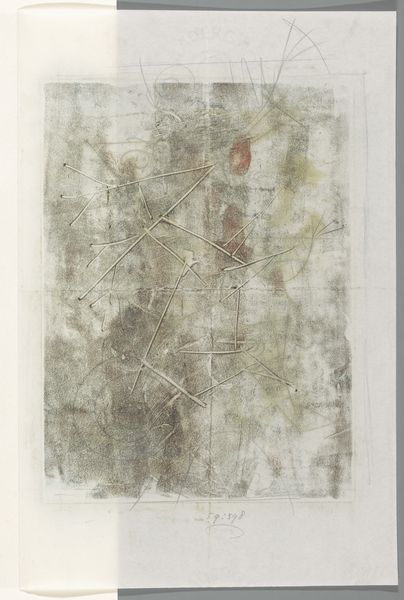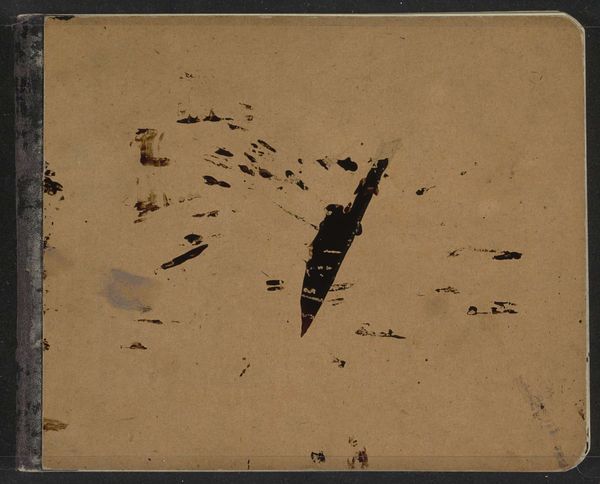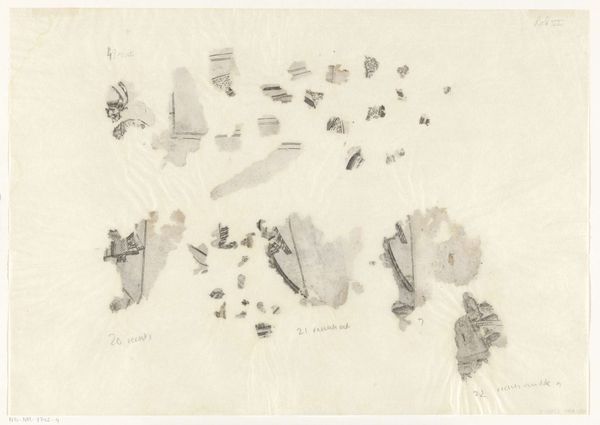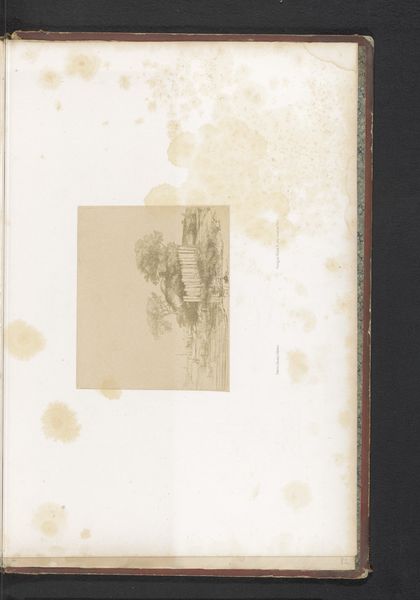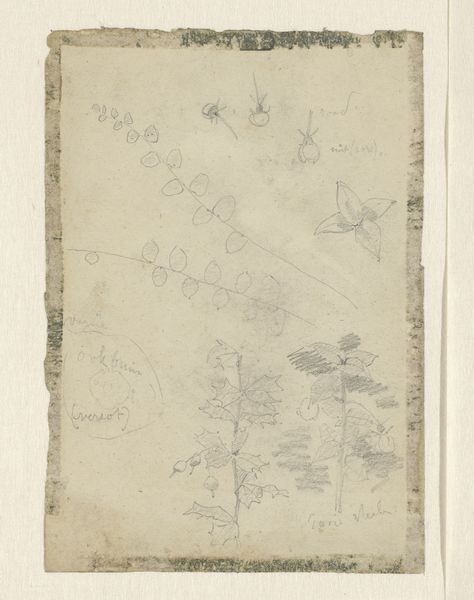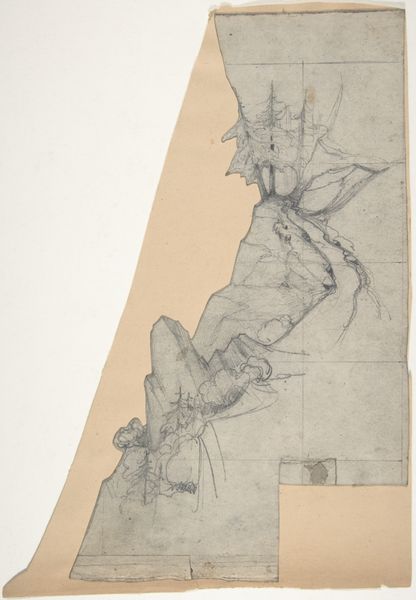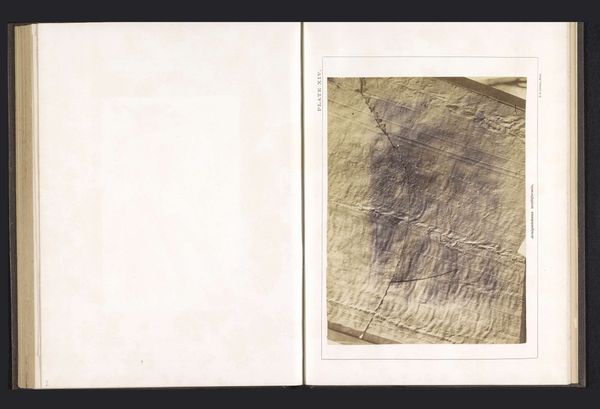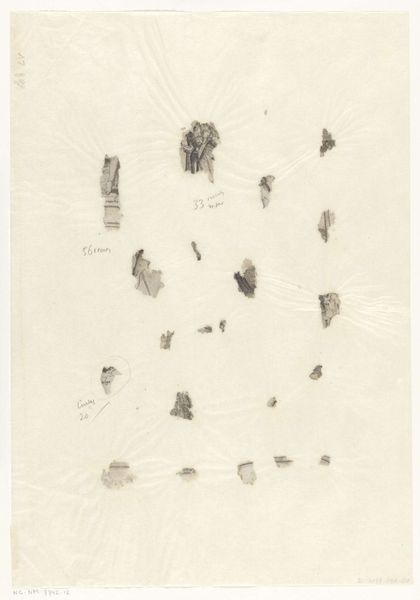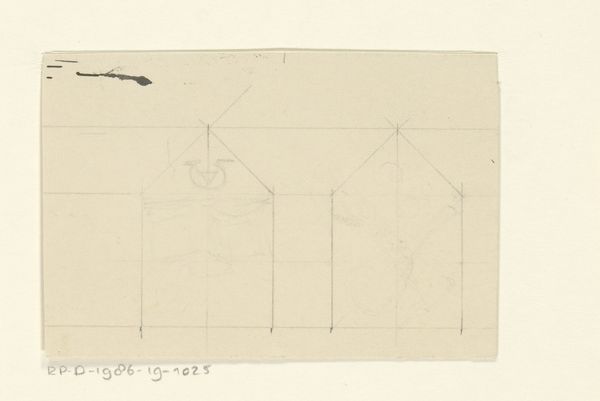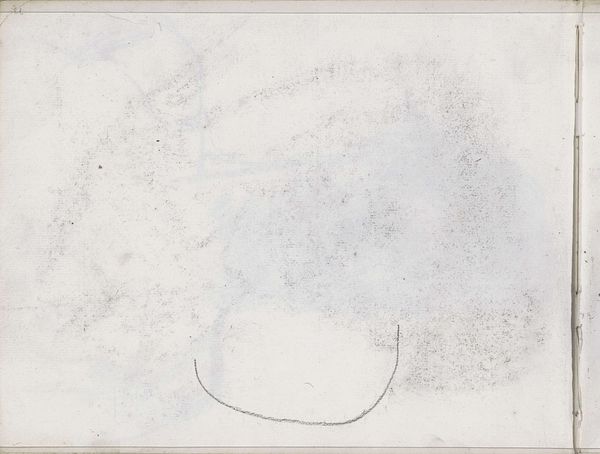
A Swarm of Flies above a Spider's Web 1860 - 1884
0:00
0:00
drawing, print, paper, ink, pencil
#
drawing
# print
#
paper
#
ink
#
pencil
#
realism
Dimensions: sheet: 11 3/16 x 8 11/16 in. (28.4 x 22.1 cm)
Copyright: Public Domain
Editor: We’re looking at Alexandre-Louis Leloir's "A Swarm of Flies above a Spider's Web," likely created between 1860 and 1884. It’s a pencil and ink drawing on paper. I’m struck by the simplicity and directness of the imagery. What stands out to you when you consider this work? Curator: The immediate draw is the starkness of the materials—pencil and ink, so basic, yet so effective in depicting this scene of predator and prey. The paper itself, its texture and visible aging, also plays a role. Consider how readily available and inexpensive these materials would have been; how does that accessibility inform our understanding of artistic production at this time? Is it elevating the everyday through careful rendering, or simply documenting a harsh reality? Editor: That's a great point. I hadn't considered how the commonality of the materials might change the art's meaning. It also seems unfinished; is that intentional or just a consequence of it being a study? Curator: The question of "finish" is interesting. Does the rawness, the sense of immediacy in the marks, contribute to its power? It rejects the expectation of highly polished, refined artworks often celebrated by the academy, thus challenging hierarchies of artistic value, wouldn’t you say? What impact do you think that decision has on how it’s received? Editor: I suppose it feels more authentic, more connected to the everyday realities of life and death. It removes some of the artifice. It’s making me rethink the value we place on particular materials. Curator: Precisely. Leloir pushes us to question those values by highlighting process, labor, and readily available materials, rather than technical bravado or precious commodities. I think focusing on how such work unsettles artistic expectations enriches our understanding. Editor: Absolutely, I see it now. Thanks for that perspective!
Comments
No comments
Be the first to comment and join the conversation on the ultimate creative platform.
